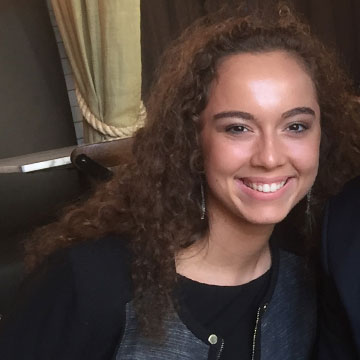Walter Laird
See also: Categories: Instructors, Dancers, History
Overview
In the 1930's, Walter Laird started dancing as a schoolboy with his sister Joan, and, in 1936, he won an early Jitterbug Championship in his home town of Leyton, Essex, where he was educated.During World War II, Walter worked in top-secret factories, designing parts for aircraft cabins. Having studied electronic engineering at technical college, he was chosen to work at the Royal Aircraft Establishment, where he met Andé Lyons, his first professional dance partner.
Andé was sent to the Royal Aircraft Establishment in Farnborough, Hampshire, England as a shorthand typist. One day, she took dictation from Walter Laird, who was a scientist working there. At the end of the dictation, he asked her if she was keen on dancing.
"By this time, the Americans were in force in the area. Like most of the girls, I now knew how to Jitterbug (later called the Jive), and I was having a great time! My answer to him was that I loved dancing and that I was pretty good at it too! We made a date and to my horror it turned out Walter was a Professional Ballroom dancer. I soon realized that I was well out of my depth. However, Walter offered to teach me to dance properly as he thought that I had potential. So that was how my second career was born!" - Andé Lyons
The Laird–Lyons partnership was entirely traditional Ballroom dancing (Standard). Laird did not switch to Latin until some time after the war.
Together they participated in various competitions and dance shows during the war. They created a dance team together with Frank and Peggy Spencer and traveled around the country, even appearing on Victor Silvester's "BBC Dancing Club".
Walter and Andé won first place at the Eighth Championship of England for Dance.
By the year 1955, Walter and Andé were already three-time Champions of England in the Professional Division of eight dances: Waltz, Tango, Quickstep, Slow Foxtrot, Rumba, Jive, Samba and Paso Doble.
At the end of the 1950's, Walter Laird and Andé Lyons decided to split up.
A New Partnership
In the early 1960's, Walter began dancing with Lorraine Reynolds (now Rohdin). Together they were three-time Professional Latin World Champions from 1962–1964, three-time European Champions, four-time champions of the British Open, four-time champions of the UK Open Championships, and four-time winners of the International Championships.Technique
Walter Laird's analytical skills enabled him to look at the physics of body movement, and the way in which the weighting of different parts of the body could contribute to the sensuous rhythmic movements.As a scientist, Walter was able to analyze the physics of body movements.
He found exactly where the center of gravity was in the performance of various movements. Knowing the center of gravity helps both partners find a sense of balance. It also helps the woman, whose speed depends on the leading of the man.
Dance and theory came together in Laird's lucid insight into the dynamics of this new competition style. His technique explored the flowing, rhythmic possibilities of the dances and their musical forms with characteristic whiplash flicks of the body. Authenticity was critical, and he demanded that "real" music be played - a down-to-earth saltiness was one of his most endearing qualities.
At that time, while Lorraine was ill with tuberculosis, Walter wrote a thesis which became the basis for his book on the art of Latin dance performance.
Later, after retiring from his dancing career, Walter met Julie Gibson, who he then married.
With his wife, Laird further developed his technique of Latin in a series of books (translated into eight languages), films and instruction tapes.
One of Laird's greatest achievements was his "Technique of Latin Dancing", first published in 1961 - further editions followed in 1964, 1972, 1977, 1983, 1988, 2003. Initially, Laird followed the traditional descriptive format, but in the 1972 edition, he published the results of a major analysis of Latin dance, and used a tabular form, including a column for 'action used' to help definition. This edition was widely influential, and has since been accepted by many dance teacher organizations as a definitive work.
He opposed the inclusion of Ballroom dancing in the Olympic Games, arguing that dance was art not sport.
Coach
Walter has coached many successful dancers including Allan Tornsberg, Vibeke Toft, Espen Salberg, Jukka Haapalainen, Sirpa Suutari-Jääskö, Donnie Burns, Peter Maxwell and Lynn Harman. They were among his first major champions on which much of his ultimate technique was developed.Accomplishments
- First place at the Eighth Championship of England for Dance
- Three-time Champion of England (1952-1955)
- Three-time World Professional Latin Dance Champion (1962–1964)
- Three-time European Champion
- Four-time Champion of the British Open
- Four-time Champion of the UK Open Championships
- Four-time Champion of the International Championships
- Secretary of Ballroom Dancers' Federation
- President of Ballroom Dancers' Federation
- Executive Consultant to the International Association of Dance Teachers (1981)
- Fellow and Examiner of the International Dance Teachers Association
- Coach of many World Champions
- Author of "Technique of Latin Dancing"
- Author of "Technique of Latin Dancing Supplement": technique for the British Dance Council's Appendix 1 (Latin) Figures
- Ballroom Dance Pack (1994, 2004) - Includes CD (French, German, Spanish editions exist)
Dance Partners
- Julie Laird
- Lorraine Raynolds (1960-1966)
- Andé Lyons (1950-1955)
- Joan Laird (1930's)
Students
Photo Gallery











